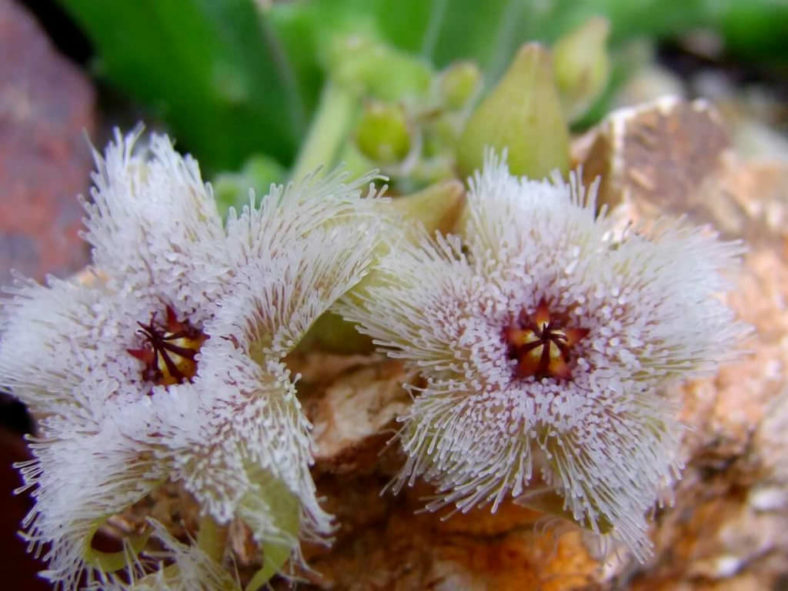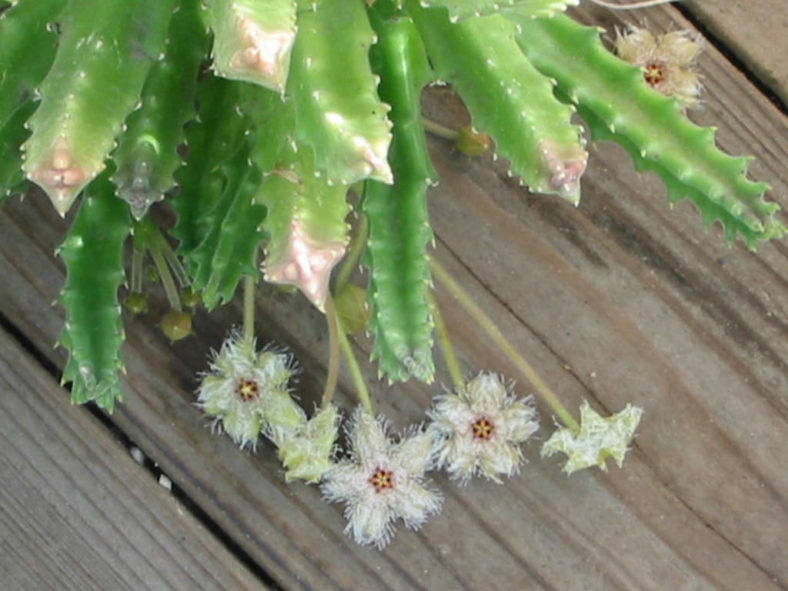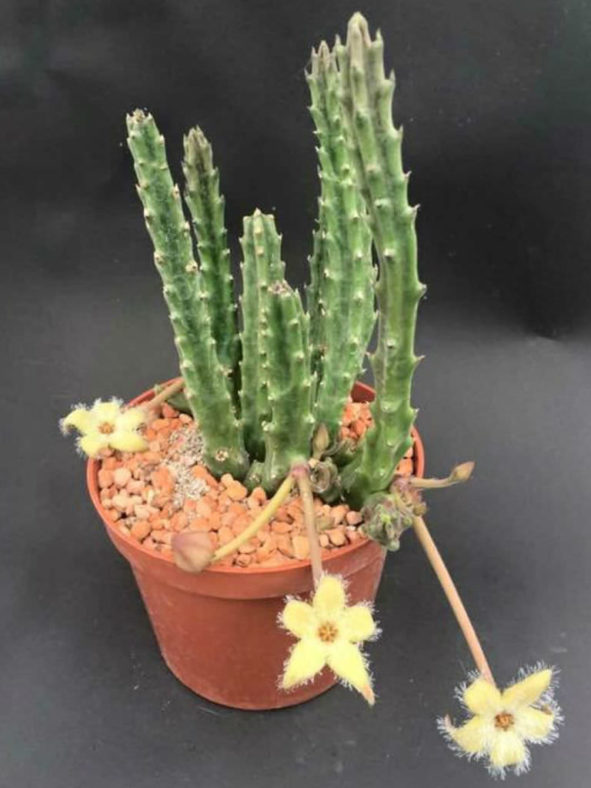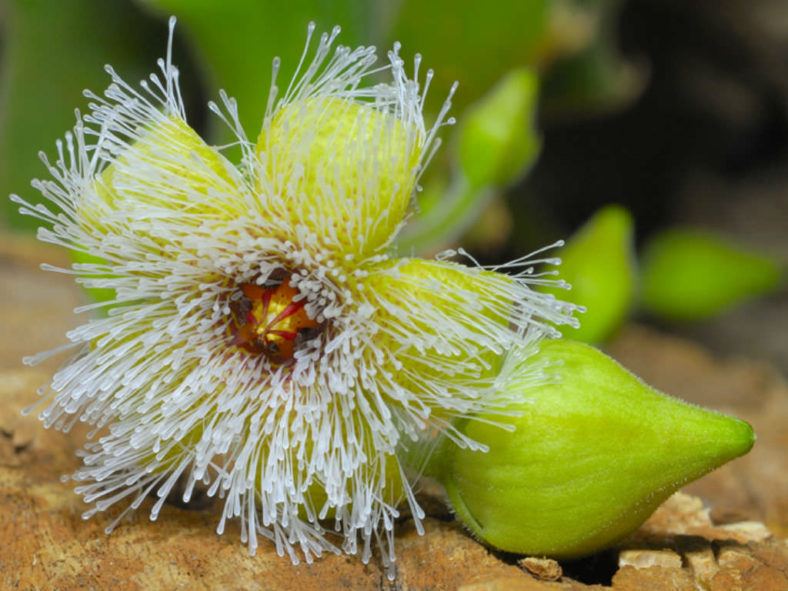Scientific Name
Stapelia glanduliflora Masson
Common Name(s)
Glandular-flowered Stapelia, Glandular Stapelia
Synonym(s)
Ceropegia glanduliflora, Gonostemon glanduliflorus, Stisseria glanduliflora
Scientific Classification
Family: Apocynaceae
Subfamily: Asclepiadoideae
Tribe: Stapeliae
Genus: Stapelia
Origin
Stapelia glanduliflora is native to South Africa. It grows on stony slopes among bushes, mainly along the valley of the Olifants River from near Klawer to about 20 km north of Citrusdal in the Western Cape province.
Description
Stapelia glanduliflora is a small succulent that forms clumps of erect, grey-green to purplish, shortly hairy stems with low, conical tubercles joined into four obtuse angles along the stem. The stems can grow up to 6 inches (15 cm) long and 0.6 inches (1.5 cm) thick. Each tubercle is tipped with an erect or incurved rudimentary leaf.
The star-shaped flowers appear near the base of the young stems on stalks that can grow up to 2 inches (5 cm) long in fall. They seem to be odorless and can reach up to 1.4 inches (3.5 cm) in diameter. The corolla is pale greenish yellow, transversely striped with pale red, and densely covered with transparent-white, club-shaped hairs. The corona can reach up to 0.3 inches (0.7 cm) in diameter and have deltoid outer lobes, yellow to orange towards the base, becoming purplish towards the apex and along margins, and almost thread-like, reddish to purple inner lobes flecked with yellow.

Hardiness
USDA hardiness zone 9a to 11b: from 20 °F (−6.7 °C) to 50 °F (+10 °C).
How to Grow and Care
Several species are fairly easy to grow. Others, often those with slightly hairy stems and the more unusual flowers, are more challenging and require careful watering (with some fertilizer) during the growing season and complete water withdrawal during the winter months. A minimum winter temperature of 10°C (50°F) is acceptable, providing plants are kept dry. A heated growing bench or incubator may help delicate plants get through the colder months. However, many species live under shrubs in their habitat and prefer light shade rather than full sun.
A gritty compost is essential, and clay pots are advisable for the more delicate species. Some growers prefer mineral-only compost to minimize the chance of a fungal attack on the roots. A layer of grit on the surface of the compost prevents moisture from accumulating around the base of the stems.
Keeping Stapelias and their roots free of pests such as mealybugs is the key to success, as fungal attack often occurs due to damage to stems by insects.
See more at How to Grow and Care for Stapelia.
Links
- Back to genus Stapelia
- Succupedia: Browse succulents by Scientific Name, Common Name, Genus, Family, USDA Hardiness Zone, Origin, or cacti by Genus
Photo Gallery
Click on a photo to see a larger version.


